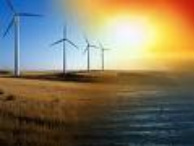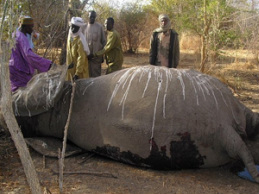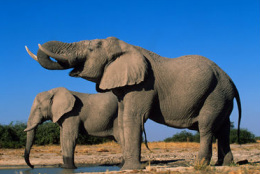
E' più che mai attuale in questo periodo il discorso legato alle fonti di energia rinnovabili, ma cosa sono? Quali quelle disponibili e soprattutto aiutano veramente in modo concreto a salvaguardare il nostro pianeta?
Cercheremo con una serie di articoli mirati e di approfondimento di fare un po' di chiarezza e di conoscere meglio una realtà in alcuni casi a noi molto vicina e già presente in Italia da diversi anni ma di cui ancora si sente parlare troppo poco.
Innanzi tutto occorre precisare che le fonti di energia si dividono in due grandi gruppi: quelle rinnovabili e quelle fossili.
Parliamo di fonti di energia rinnovabili per quelle risorse energetiche che non pregiudicano le condizioni ambientali e che anzi sfruttano elementi già presenti in natura che si rigenerano o che sono inesauribili per creare energia elettrica o calore da utilizzare trasformandolo in modo pulito e senza scorie o emissioni atmosferiche inquinanti e nocive.
Nello specifico fanno parte di questa categoria l'energia solare, idroelettrica, eolica, geotermica, delle biomasse, del moto ondoso e delle maree.
Sono invece fonti di energia di natura fossile il carbone, il petrolio, il gas naturale (metano) e il nucleare (uranio e plutonio), materiali sì presenti in natura, ma in quantità limitata in un'ottica storica breve come quella legata alla vita dell'uomo e quindi da considerarsi non rinnovabili.
Il problema principale legato a queste ultime è proprio il fatto che esse sono destinate a esaurirsi nel tempo e ciò rende assolutamente necessario muoversi tempestivamente per trovare soluzioni alternative in modo da non arrivare in un prossimo futuro ad uno stop energetico.
Non bisogna inoltre dimenticare che le fonti di energia fossile nella loro combustione producono gas inquinanti che contribuiscono e sono fattore determinante nel riscaldamento globale e in alcuni casi come per il nucleare generano scorie difficilmente smaltibili e che rimangono comunque estremamente pericolose per la vita sulla Terra per lunghissimi decenni.
Allora perché non scegliere subito di passare a fonti di energia pulita e rinnovabile?
Oltre ad una serie di interessi evidentemente di natura economica legati al mercato del petrolio e soci c'è da dire che anche per le fonti di energia rinnovabili esistono pro e contro.
Aspetto sicuramente positivo è che nella maggior parte dei casi non esistono spese di estrazione delle materie prime, come nel caso dell'energia solare, ma per contro l'energia prodotta ha spesso una densità di flusso di piccole dimensioni e richiede ampie zone e un esborso iniziale piuttosto ingente per poter creare le infrastrutture adeguate al loro sfruttamento.
C'è da dire tuttavia che si tratta di un investimento oneroso soltanto iniziale che verrà poi ampiamente ammortizzato nel tempo con costi operativi decisamente più bassi.
Se da un lato un ulteriore aspetto “negativo” è dato dal fatto che alcune fonti energetiche non sono sempre reperibili come l'eolica, le maree o il sole legato a determinate condizioni meteorologiche, dall'altro per esempio la geotermica invece nelle aree in cui è sfruttabile consente una costante produzione di energia sia per quanto concerne l'elettricità che il calore.
Lo scoglio tuttavia più difficile da superare e che ancora non prevede una soluzione nell'immediato futuro è l'immagazzinaggio dell'energia prodotta, in quanto ora va consumata direttamente in loco e non può essere trasportata o accumulata.
Il cammino di ricerca per un'energia pulita ed utilizzabile al 100% per il nostro attuale fabbisogno energetico è quindi ancora molto lungo e richiede studi e sperimentazioni perché per ora le fonti alternative in uso possono fungere solo da integrazione, ma non da sostitute dei metodi tradizionali.
Tutto ciò non deve però scoraggiare i governi dei vari Paesi e ne è un esempio la coraggiosa decisione della Germania che entro il 2022 smantellerà tutte le sue centrali nucleari volgendosi verso risorse energetiche alternative. La stessa Cina, mercato emergente degli ultimi decenni sta investendo ingenti risorse economiche per lo studio e lo sviluppo delle varie fonti di energia alternative in particolar modo quella solare.
Infatti un sistema energetico come il nostro legato a doppio filo all'uso del petrolio sia come carburante che come combustibile per l'industria e per la produzione di energia elettrica ci conduce inevitabilmente a rialzi di prezzo dovuti alla sua estrazione e al suo lento ma inesorabile esaurimento con ripercussioni negative sull'andamento dell'economia mondiale.
Trovare quindi una o più soluzioni diventa fondamentale sia per il nostro benessere finanziario che per la salvaguardia del Pianeta.
Clicca qui per dire NO al nucleare.
Cercheremo con una serie di articoli mirati e di approfondimento di fare un po' di chiarezza e di conoscere meglio una realtà in alcuni casi a noi molto vicina e già presente in Italia da diversi anni ma di cui ancora si sente parlare troppo poco.
Innanzi tutto occorre precisare che le fonti di energia si dividono in due grandi gruppi: quelle rinnovabili e quelle fossili.
Parliamo di fonti di energia rinnovabili per quelle risorse energetiche che non pregiudicano le condizioni ambientali e che anzi sfruttano elementi già presenti in natura che si rigenerano o che sono inesauribili per creare energia elettrica o calore da utilizzare trasformandolo in modo pulito e senza scorie o emissioni atmosferiche inquinanti e nocive.
Nello specifico fanno parte di questa categoria l'energia solare, idroelettrica, eolica, geotermica, delle biomasse, del moto ondoso e delle maree.
Sono invece fonti di energia di natura fossile il carbone, il petrolio, il gas naturale (metano) e il nucleare (uranio e plutonio), materiali sì presenti in natura, ma in quantità limitata in un'ottica storica breve come quella legata alla vita dell'uomo e quindi da considerarsi non rinnovabili.
Il problema principale legato a queste ultime è proprio il fatto che esse sono destinate a esaurirsi nel tempo e ciò rende assolutamente necessario muoversi tempestivamente per trovare soluzioni alternative in modo da non arrivare in un prossimo futuro ad uno stop energetico.
Non bisogna inoltre dimenticare che le fonti di energia fossile nella loro combustione producono gas inquinanti che contribuiscono e sono fattore determinante nel riscaldamento globale e in alcuni casi come per il nucleare generano scorie difficilmente smaltibili e che rimangono comunque estremamente pericolose per la vita sulla Terra per lunghissimi decenni.
Allora perché non scegliere subito di passare a fonti di energia pulita e rinnovabile?
Oltre ad una serie di interessi evidentemente di natura economica legati al mercato del petrolio e soci c'è da dire che anche per le fonti di energia rinnovabili esistono pro e contro.
Aspetto sicuramente positivo è che nella maggior parte dei casi non esistono spese di estrazione delle materie prime, come nel caso dell'energia solare, ma per contro l'energia prodotta ha spesso una densità di flusso di piccole dimensioni e richiede ampie zone e un esborso iniziale piuttosto ingente per poter creare le infrastrutture adeguate al loro sfruttamento.
C'è da dire tuttavia che si tratta di un investimento oneroso soltanto iniziale che verrà poi ampiamente ammortizzato nel tempo con costi operativi decisamente più bassi.
Se da un lato un ulteriore aspetto “negativo” è dato dal fatto che alcune fonti energetiche non sono sempre reperibili come l'eolica, le maree o il sole legato a determinate condizioni meteorologiche, dall'altro per esempio la geotermica invece nelle aree in cui è sfruttabile consente una costante produzione di energia sia per quanto concerne l'elettricità che il calore.
Lo scoglio tuttavia più difficile da superare e che ancora non prevede una soluzione nell'immediato futuro è l'immagazzinaggio dell'energia prodotta, in quanto ora va consumata direttamente in loco e non può essere trasportata o accumulata.
Il cammino di ricerca per un'energia pulita ed utilizzabile al 100% per il nostro attuale fabbisogno energetico è quindi ancora molto lungo e richiede studi e sperimentazioni perché per ora le fonti alternative in uso possono fungere solo da integrazione, ma non da sostitute dei metodi tradizionali.
Tutto ciò non deve però scoraggiare i governi dei vari Paesi e ne è un esempio la coraggiosa decisione della Germania che entro il 2022 smantellerà tutte le sue centrali nucleari volgendosi verso risorse energetiche alternative. La stessa Cina, mercato emergente degli ultimi decenni sta investendo ingenti risorse economiche per lo studio e lo sviluppo delle varie fonti di energia alternative in particolar modo quella solare.
Infatti un sistema energetico come il nostro legato a doppio filo all'uso del petrolio sia come carburante che come combustibile per l'industria e per la produzione di energia elettrica ci conduce inevitabilmente a rialzi di prezzo dovuti alla sua estrazione e al suo lento ma inesorabile esaurimento con ripercussioni negative sull'andamento dell'economia mondiale.
Trovare quindi una o più soluzioni diventa fondamentale sia per il nostro benessere finanziario che per la salvaguardia del Pianeta.
Clicca qui per dire NO al nucleare.

Nowadays, the issue about renewable energy sources is more relevant than ever. But what are they? Which are the available ones? And, above all, do they really help us to safeguard our planet in a concrete way?
Through a series of focused and accurate articles, we will try to present this topic with clarity and to get better acquainted with a reality which, in certain cases, is very close to us and which Italy has been dealing with for several years, though it is hardly discussed about.
First of all, we need to point out that energy sources are divided into two big groups: renewable and fossil ones.
Renewable energy sources do not affect the environmental conditions but, on the contrary, they exploit elements - already present in nature - that are able to regenerate or are inexhaustible in order to create electric power or heat to be used by transforming them in a clean way and without any waste or any polluting and harmful emissions.
In particular, in this category there are solar, hydroelectric, wind, geothermal, biomass, wave motion and tide powers.
On the contrary, in the group dealing with fossil energy we can find coal, oil, natural gases (methane) and nuclear materials such as uranium and plutonium. They are present in nature as well, but, from a short historical perspective as human life is, their quantity is limited and they must be considered non-renewable.
The main problem linked to these ones is that they will blow over with the passing of time, and for this reason, it is absolutely necessary to take action immediately to find alternative solutions not to get to an energy stop in the next future.
Moreover, we must not forget that, in their combustion, fossil energy sources produce polluting gases increasing the global warming, or they are even its main cause. Sometimes, as the nuclear materials do, they generate wastes that are difficult to dispose or may remain extremely dangerous for life on Earth for several decades.
And so, why not choosing clean and renewable energy sources at once?
Besides a series of clearly economic interests linked to the oil market and so on, we must say that, also as far as renewable energy sources are concerned, there are pros and cons.
A surely positive aspect is that, in most cases, the extraction expenses of the raw materials, such as solar power, do not exist. However, the resulting energy has often a small flux density and requires broad zones and an initial outlay that is too high in order to create the proper infrastructures for the exploitation of these materials.
However, it is an investment that is expensive just in the beginning and may be widely written off in a short time with definitely lower operating expenses.
If, on the one hand, a further “negative” aspect is due to the fact that some energy sources are not always available, since wind, tide and solar power are linked to certain weather conditions. On the other hand, for instance, geothermal power, in the areas where it can be exploited, allows a constant production of energy as far both electricity and heat are concerned.
However, the most difficult hump to get over and to which there is not a solution yet is the storing of the produced energy, since it must be used directly in loco and cannot be transported or stored.
As we can see, the path of the research on clean power to be totally used for our present energy needs is still very long and requires a lot of studies and testing, since, at the moment, the available alternative sources can be considered just as supplements, not as substitutes for the traditional methods.
In spite of this, this must not discourage the governments of the various Countries. For instance, Germany has bravely decided to dismantle, within 2022, all its nuclear plants in order to rely on alternative energy sources. And China , the emerging market of the last decades, is investing huge amount of money in the study and in the development of the various alternative energy sources, especially in solar power.
Indeed, a power system link ours, which is linked to the use of oil as both fuel for vehicles and fuel for industry and for the production of electric power, leads necessarily to an increase of prices due to its extraction and to its slow but inexorable depletion, with negative repercussions on the trend of the global economy.
To sum up, it becomes necessary to find one or more solutions to both our financial well-being and the safeguard of our Planet.
Click here to say NO to nuclear.
By Eliana - ISF_ItS Coordinator
Through a series of focused and accurate articles, we will try to present this topic with clarity and to get better acquainted with a reality which, in certain cases, is very close to us and which Italy has been dealing with for several years, though it is hardly discussed about.
First of all, we need to point out that energy sources are divided into two big groups: renewable and fossil ones.
Renewable energy sources do not affect the environmental conditions but, on the contrary, they exploit elements - already present in nature - that are able to regenerate or are inexhaustible in order to create electric power or heat to be used by transforming them in a clean way and without any waste or any polluting and harmful emissions.
In particular, in this category there are solar, hydroelectric, wind, geothermal, biomass, wave motion and tide powers.
On the contrary, in the group dealing with fossil energy we can find coal, oil, natural gases (methane) and nuclear materials such as uranium and plutonium. They are present in nature as well, but, from a short historical perspective as human life is, their quantity is limited and they must be considered non-renewable.
The main problem linked to these ones is that they will blow over with the passing of time, and for this reason, it is absolutely necessary to take action immediately to find alternative solutions not to get to an energy stop in the next future.
Moreover, we must not forget that, in their combustion, fossil energy sources produce polluting gases increasing the global warming, or they are even its main cause. Sometimes, as the nuclear materials do, they generate wastes that are difficult to dispose or may remain extremely dangerous for life on Earth for several decades.
And so, why not choosing clean and renewable energy sources at once?
Besides a series of clearly economic interests linked to the oil market and so on, we must say that, also as far as renewable energy sources are concerned, there are pros and cons.
A surely positive aspect is that, in most cases, the extraction expenses of the raw materials, such as solar power, do not exist. However, the resulting energy has often a small flux density and requires broad zones and an initial outlay that is too high in order to create the proper infrastructures for the exploitation of these materials.
However, it is an investment that is expensive just in the beginning and may be widely written off in a short time with definitely lower operating expenses.
If, on the one hand, a further “negative” aspect is due to the fact that some energy sources are not always available, since wind, tide and solar power are linked to certain weather conditions. On the other hand, for instance, geothermal power, in the areas where it can be exploited, allows a constant production of energy as far both electricity and heat are concerned.
However, the most difficult hump to get over and to which there is not a solution yet is the storing of the produced energy, since it must be used directly in loco and cannot be transported or stored.
As we can see, the path of the research on clean power to be totally used for our present energy needs is still very long and requires a lot of studies and testing, since, at the moment, the available alternative sources can be considered just as supplements, not as substitutes for the traditional methods.
In spite of this, this must not discourage the governments of the various Countries. For instance, Germany has bravely decided to dismantle, within 2022, all its nuclear plants in order to rely on alternative energy sources. And China , the emerging market of the last decades, is investing huge amount of money in the study and in the development of the various alternative energy sources, especially in solar power.
Indeed, a power system link ours, which is linked to the use of oil as both fuel for vehicles and fuel for industry and for the production of electric power, leads necessarily to an increase of prices due to its extraction and to its slow but inexorable depletion, with negative repercussions on the trend of the global economy.
To sum up, it becomes necessary to find one or more solutions to both our financial well-being and the safeguard of our Planet.
Click here to say NO to nuclear.
By Eliana - ISF_ItS Coordinator



 RSS Feed
RSS Feed